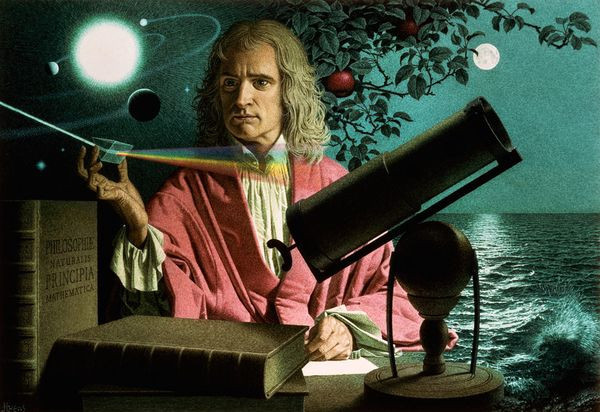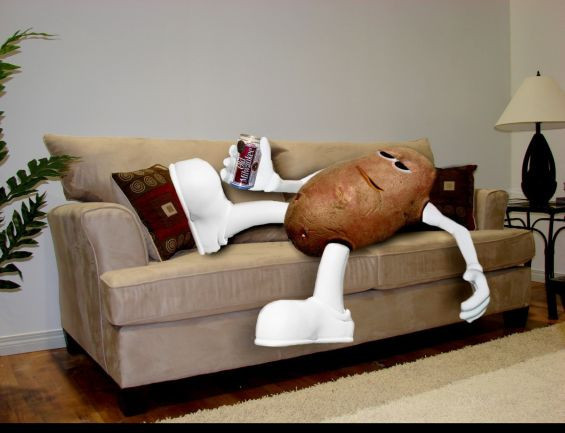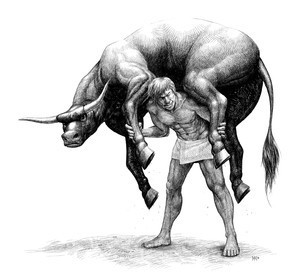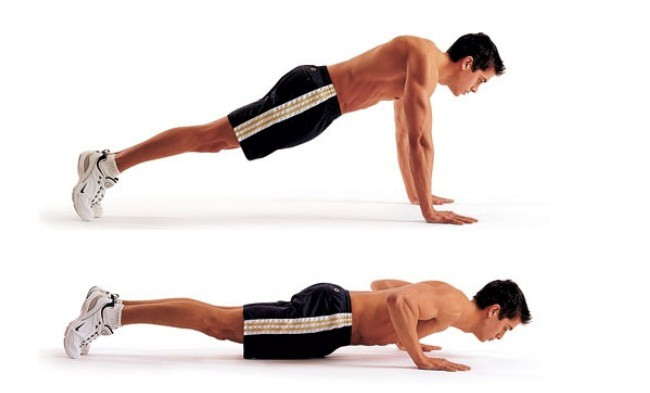WHO WAS THIS MAN?
Sir Isaac Newton was a 17th century English scientist who became known as one of the greatest mathematicians, physicists, astronomers and theologians of all time.
Newton discovered:
- The laws of motion
- Gravity
- White light and how color is created
- The law of cooling
He also invented the reflecting telescope, coins with milled edges and cat doors.

I will be speaking only of Newton’s three laws of motion within this article.
FIRST LAW OF MOTION
An object at rest stays at rest and an object in motion stays in motion with the same speed and in the same direction unless acted upon by an unbalanced force.
In other words, objects keep on doing what they have been doing. This is why head restraints are placed in cars – to prevent whiplash in the event of rear end collisions.
I can easily see how Newton’s first law of motion helps me with my workouts. At times, I may consider my morning workout with a deficit of energy and enthusiasm. It becomes tempting to skip the workout or put it off until later in the day, though I know that it is unlikely that I will begin a workout later.
This happened very recently. I battled within myself – do I want to workout at all?
I decided to do a minimal routine, fewer sets, fewer reps and lighter weights. So, I began. It quickly became apparent that I was enjoying this and that my energy was returning. I maintained the lighter resistance, but increased my reps over what I normally did. The workout went well and I felt good about it.
This was very obviously a situation of my choosing to set up motion and then being guided by the momentum. If I had begun with the prospect of heavy resistance and an hour or more of time, I would have stayed at rest and done nothing. But the dynamics changed as soon as I got started.
I have used the image below in other articles. This is what I did not want to become on that occasion.

SECOND LAW OF MOTION
When force is applied to an object, it produces momentum in that object directly proportional to the amount of force. Force is the product of mass and its acceleration.
For example, when we kick a ball, the distance the ball moves is directly related to the force of our kick. When we run into the wind, we encounter more resistance; thus, we have a tougher cardio experience
We know that we need more force to move a heavy weight than one that is lighter.
In our resistance workouts, we know that our muscles are programmed to contract by our nervous system. It follows that we must continually increase the weight of resistance or the number of reps to show progress. A very basic hypothetical plan is shown below:
- Start with 8 reps of a 10 pound weight
- Raise the number of reps as this becomes easier to manage
- When 12 reps become easy, switch the weight to 15 pounds
- Continue accordingly. This is the principle of progressive resistance
The story of Milo of Croton represents strength by progressive resistance perfectly. Milo was an Olympic wrestling champion 6 times in ancient Greece. His strength was legendary.
When Milo was a boy, a new calf was born near his home. He decided to place the calf on his shoulders and take it for a walk. A version of this legend has Milo climbing a hill with the calf on his shoulders. He continued this daily. After 4 years, the calf had become a bull, but Milo hardly noticed the gradual growth of the bull since his strength was also gradually growing.

THIRD LAW OF MOTION
For every action, there is an equal and opposite reaction.
This means that when we push an object, that object pushes back against us with the same force, but in the opposite direction.
An example: when a swimmer pushes against the wall of a pool with his feet, he accelerates in the opposite direction. When we sit down, we exert a downward force on the chair and the chair exerts an upward force on our body.
There are many applications of this law of motion, some of which are listed here:
- Walking
- Pulling a resistance band
- Bouncing a ball
- Jumping on a trampoline
- A slingshot
- The recoil of a gun
- Rowing a boat
The best example of Newton’s third law of motion for workouts seems to me to be the push-up. We need no weights or benches to work our chest and triceps. We produce our own force as the surface we use is pushing back against us.

RESOURCES
Here are a few relevant Amazon items to consider. As an Amazon affiliate, I may earn from qualifying purchases. Click on the links and then scroll around as you wish:
- Resistance bands – (I use resistance bands with every workout)
- Push up board – to work specific muscle groups. (I have used this for years)
- Whey protein – – for lean muscle mass
- Crunch device – to protect the back during floor abdominal exercises. I use this daily.
Dick’s Sporting Goods is offering huge discounts on cardio equipment. For example, up to $1500 off on Nordic Track. This is the largest sporting goods merchant in the U.S. and I have been their customer for several decades. I also have a Nordic Track treadmill.
Bullworker Fitness – isotonic and isometric fitness products that I have used for several years. Easily transportable.
Goli Nutrition – highly recognized and healing gummies and chocolate bites. I have 4 different bottles presently.
CONCLUDING
I was quite impressed by the present day applications of physical laws established by Sir Isaac Newton 380 years ago. I had seen the many images of him sitting beneath a tree with an apple dropping on his head, but was not always aware of the details of his laws of motion.
Breaking down those physical laws as they applied to exercise has helped me to understand more fully the benefits of weight training – and the reasons for those benefits.
Please leave me any comments or questions in the “Comments” section below, Or email me, richard@myworkoutathome.com.
Be well. Stay healthy!